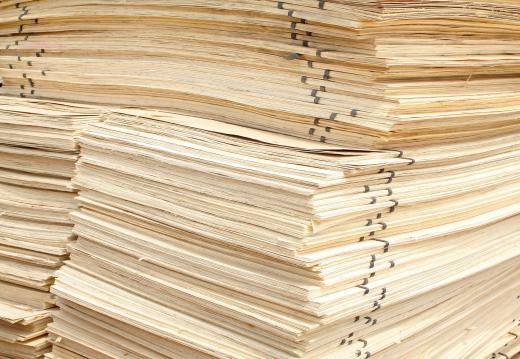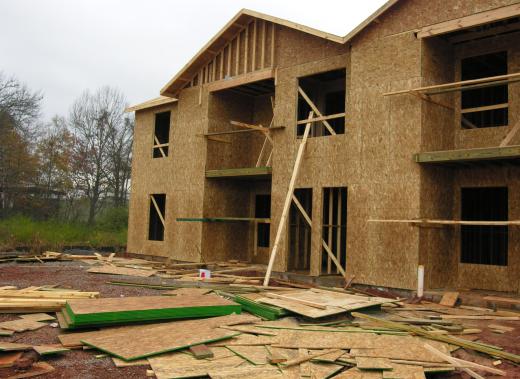Shuttering plywood is a material used in the shuttering process, which occurs when pouring concrete into molds. The Shuttering plywood can be constructed in such a way that it forms a mold which is weather resistant and will not stick to the concrete itself. This material is usually not especially attractive, so it is not suitable for applications that require an aesthetically pleasing outer veneer. Plywood is a type of wooden panel that is created by laying thin veneers of wood on top of each other, then gluing those veneers together.
Plywood can be very strong if constructed properly. The veneers are usually laid in such a way that grains run perpendicularly to each other, thereby maximizing strength and reducing the likelihood of splitting. The type of glue used to create the wood will also have an impact on its strength. Shuttering plywood is very often used for outdoor applications, which means the wood must be resistant to water damage, especially warping and rotting. The glue that is used to make shuttering plywood is therefore resistant to moisture penetration to ensure strength and stability. This type of wood can generally be reused, though the panels will need to be cleaned carefully and the wood will need to be stored in a cool, dry location.

Some plywoods feature an outer veneer that is smooth and attractive; it is usually of a higher quality than the other veneers in the center or inside of the plywood. This is done so the outer layer will be an attractive one that can be sanded and finished for projects that require a clean and attractive aesthetic. Shuttering plywood will not feature such a veneer, as this material is not meant to be used for aesthetic purposes. This also means that the shuttering plywood is likely to be less expensive than other plywoods that feature a high end outer veneer.

The panels of the shuttering plywood will be held in place by temporary wood or metal supports. Once the plywood is in place, concrete can be poured into the mold created by the panels, and the panels will support the concrete until it sets. The plywood can then be pulled away from the concrete, thereby creating a concrete structure independent of the plywood and the temporary structural supports holding the plywood in place. If some concrete is left on the plywood, a release agent may be used to remove it so the wood can be reused.
